
|
Sigma 55-200 mm F/4-5.6 DC A nice surprise for E-System SLR users |

|
My other articles related to the |
|
Here comes John Foster again. Some time in 2005, after enticing me to the Olympus 40-150 ZD lens he wrote: "Have a look at the Sigma: it may be not as good as the ZD, somewhat soft in the corners, but still pretty good, especially for the money". As you could see in my review, I liked the ZD 40-150. But what do I risk? At $160 (up from $140 just a month earlier), the Sigma lens is a bargain, regardless of how good it is, and the extra 50 mm of maximum focal length may come useful in my wannabe wildlife shooting. I've ordered it, as usual, from B&H, and the very next day the good people from UPS delivered. (I have no connection with B&H, except that they get almost all of my photo equipment business for the last twenty years, and deservedly so; those people work like a Swiss watch!) Specifications
Here are the lens specifications:
|
| .t.jpg)
| .t.jpg)
| All equipment pictures in this page were shot using my Seven-Dollar Tabletop Studio, with a C-5060WZ: aperture priority at F/8 or so, outdoors open shade, tripod. | |||
|
First impressions: build and finish The lens appears to be nicely made and finished, although the exterior is plastic (except for the mount, which seems to be stainless steel). The outside of the barrel has a matte black, suede-like finish, with focal length and focus marks painted in white (I am not sure how durable these markings will turn out). The inner barrel, sliding out during zooming, shows some corner-cutting: it feels a bit fragile, being quite thin, and does not seem robust enough for substantial (and I don't even mean professional) use. Oh, well, the Sigma people had to save money somewhere. The focusing and zooming rings operate smoothly, albeit the latter is a bit stiff for my liking. Neither focusing nor zooming is of the internal type: zooming in extends the total lens length by 33 mm, while the inner barrel (hosting front lens elements) rotates when the lens is being focused. The latter fact makes the use of polarizing filters less convenient: you have to adjust the polarizer angle only after the lens has been focused. This is normal in less expensive zoom lenses, and in practice it is not much of a problem if most of your shots are focused at relatively large distances: angular differences between such distance settings will be minimal and can be ignored. |
|
The lens is surprisingly light and small, which makes it quite convenient to use without a tripod, not to mention carrying it along when hiking. Actually, when fully collapsed (at 55 mm), it is just about 5 mm longer than the 14-45 mm Olympus zoom (see the picture at the right). |
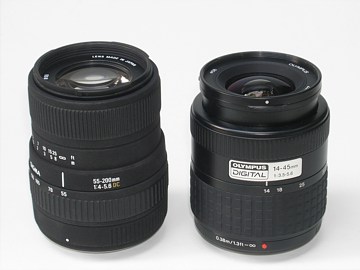
| |||||||||||||||||||||||||||||||||||||||||||||||||||||||||||||||||||||||||||||||||||||||||||||||||||||||||||||||||||
|
Mounting the hood: caution required The tubular lens hood (included in the box) is secured with a bayonet on the inner barrel; in can also be mounted facing back, for storage. It is long enough to provide good protection from incident light, and the inner surface looks quite absorbent, better than in two Olympus "economy" zooms in the Four Thirds mount. I'm not happy with the hood bayonet precision: it is too stiff. Located on the inner barrel (which rotates, driven with the focusing motor or by the manual focus ring), it is quite rough in operation; mounting or unmounting the hood may result in excessive pressure on the focus coupling mechanism. Sigma warns you to disable the AF with use of an external switch (not via the camera settings), and I am going to repeat this warning here: Before mounting or dismounting the lens hood, move the AF/MF lens switch to the MF position to avoid damage to the AF coupling mechanism. (Sigma urges the same precaution when mounting or dismounting filters, but I wouldn't worry about that, as long as a filter is not stuck.) As it turns out, precision of the hood bayonet is one of the telltales of lens make quality and finish: the bayonet on the E-10 or E-20 could be mounted with use of minimum torque, yet with a precise, nice "snap". It turns out that making two pieces of plastic fit together is not as easy as it may seem. Coupling with the camera The Four Thirds specifications are public: there are no "secrets" used by camera makers in intercommunication protocols to keep competitors from providing full compatibility between lens and body (a practice allegedly used by some manufacturers). Therefore I was expecting no glitches here, and things turned out that way. The Sigma lens couples flawlessly with the E-300 and E-1 (2008: checked with E-3 and E-510); the aperture works as it should, autofocus is OK (quite fast and precise), the current focal length is reported back to the camera (verified in EXIF information), and the firmware version is shown as 1.0 in the camera's menu system.
|
| .t.jpg)
| .t.jpg)
|
The Sigma 55-200 mm DC lens mounted on an E-300, shown at two extreme zoom settings.
|
| It remains unknown if the lens also reports the data needed by the camera and/or Olympus postprocessing software for compensation of geometric distortion and light fall-off. Both effects are, however, not visible with this lens, so I couldn't really care less. I have seen some voices in discussion groups worried about this issue; I consider it of no importance at all. Focusing There is one minor difference in operation between this lens and the ones made by Olympus: when switching the camera to manual focus mode, you also need to flip a switch of the lens itself and vice versa. This does not bother me at all, because I found manual focusing on digital cameras (those with less than full-frame 35-mm sensors) not really useful: the finder image is just way too small. Still, if you plan to use the manual focus capability, you may find the Sigma lens better suited to that function than the ZD 45-150 mm, as the Sigma has a mechanical focusing ring. The "fly by wire" approach by Olympus (when you turn the focusing ring to activate the focusing motor) is highly imprecise and has a time lag, at least it feels this way; I can't use it at all. I was a bit surprised discovering that the manual focus ring allows you to focus a bit beyond infinity. This, however, is sometimes the case for long lenses, especially AF ones: it allows to use less stringent tolerances and, in some cases, to accommodate thermal contraction and expansion of lens and barrel elements. Just keep it in mind when focusing manually: turning the focus ring all the way does not mean that you have focused at infinity. Optical The lens consists of 12 elements in 9 groups: quite a many for this focal length range. None of the elements have aspherical surfaces or use special dispersion glass — those are usually of more use in wide-angle lenses. The glass is multicoated; at least this is how the external surfaces look. In any case, the lens does not suffer from excessive internal reflections and ghosting; the contrast also seems normal for these focal lengths (it means slightly low, but OK). The geometric distortion, if any, is negligible, as expected in a tele zoom. I wasn't able to see any vignetting (light fall-off). This was to be expected. The same lens is sold with mounts for other digital SLRs, using APS-sized sensors which are slightly larger than Four Thirds ones: up to 16×24 mm (depending on the model) versus 13×17.3 mm. This means that it has to provide a coverage slightly larger than needed for the Olympus SLRs. (On the flip side, its effective resolution will be slightly higher on those cameras, as images from E-System models will require about 25% more magnification for printing or viewing.) As always, what ultimately counts are the pictures; let us move on. Image samples As usual, pictures at the left are full frames, reduced and re-sharpened without any further manipulation, while those at the right are fragments cropped from full-size originals, without any postprocessing, shown in full pixel size. Remember that these 1:1 samples look significantly larger on your screen than they do in prints, even large ones: on a 90 DPI display the detail is the same as on a 69x92 cm (27"×36") print, which should be viewed from a distance of 115 cm (45"). This means that what you'll see on the print will be much better than what you see on the screen. Here comes the first set of samples, using my regular subject: the pond in Crofton, MD, where I live. All were shot with a tripod, within seconds from each other, so that the changing light did not affect the apparent contrast. The camera used auto WB, and the autoexposure compensation was at -0.3 EV. All pictures in this series were shot at the aperture wide open — the most demanding setting.
|
| 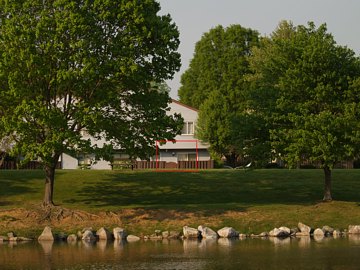
| 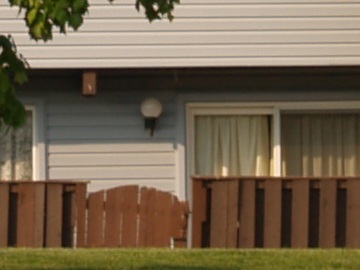
|
F = 55 mm, aperture priority: 1/640 s at F/4.0, ISO 100
|
|
| 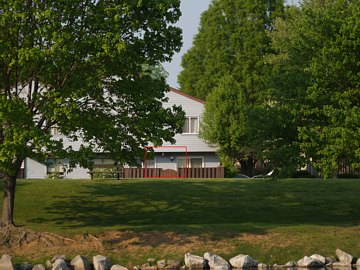
| 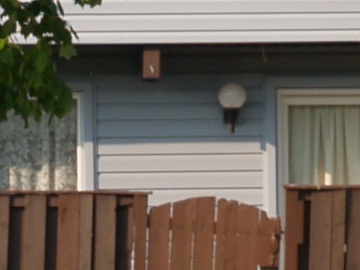
|
F = 72 mm, aperture priority: 1/500 s at F/4.3, ISO 100
|
|
| 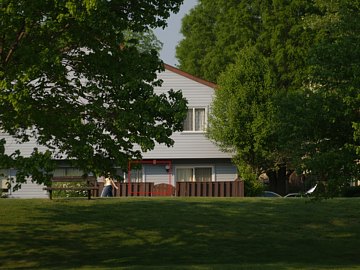
| 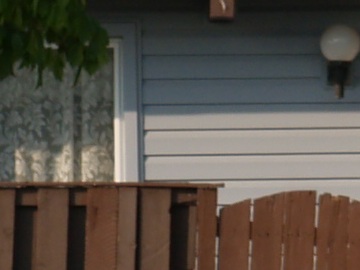
|
F = 102 mm, aperture priority: 1/640 s at F/4.6, ISO 100
|
|
| 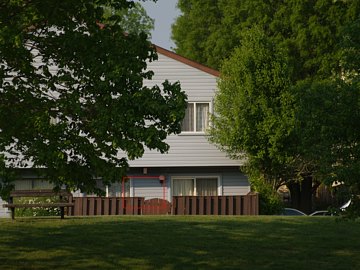
| 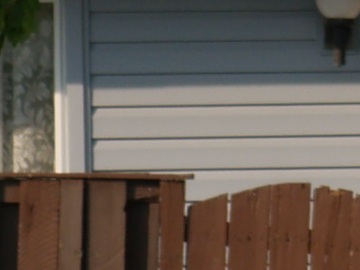
|
F = 134 mm, aperture priority: 1/500 s at F/5.0, ISO 100
|
|
| 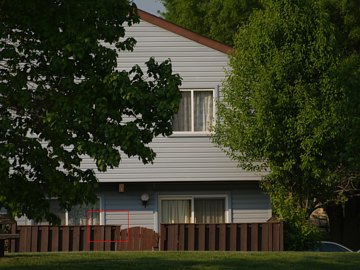
| 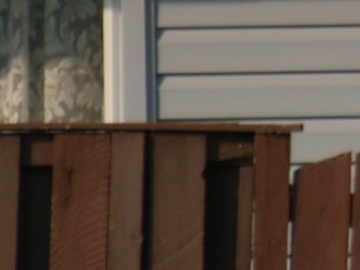
|
F = 200 mm, aperture priority: 1/500 s at F/5.6, ISO 100 | (Click here for the original, full-frame image)
| This is respectable, and quite surprising at the price. Remember that I always set the in-camera sharpening to -2 (minimum) and contrast to -1. At smaller apertures the sharpness improves noticeably, if not drastically, see the next picture below. (The first picture shows some yellow shift in white balance, but this has nothing to do with the lens, a behavior I'm experiencing occasionally with the E-300.) My lake image does not include any distinct corner detail to check the peripheral performance; from other pictures I wasn't able to notice any sharpness deterioration towards the corners. Here is an example.
|
| 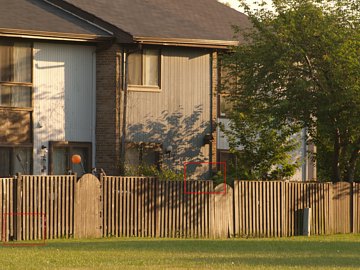
| 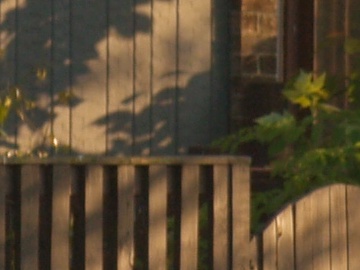
|
F = 200 mm, aperture priority (-0.7 EV): 1/160 s at F/8.0, ISO 200
|
A central sample from the frame at the left
|
The picture was shot without a tripod, but this does not seem to be an issue here. The corner sharpness is not worse than that in the center at F/8.
| Frankly, I was hoping to see that, because the lens optics has been designed to accommodate the slightly larger, APS-sized frame of other makers' digital SLRs. The contrast, as before, was a little low but this was to be expected at this focal length and at this distance from the subject (atmospheric haze). Generally, a good job.
| 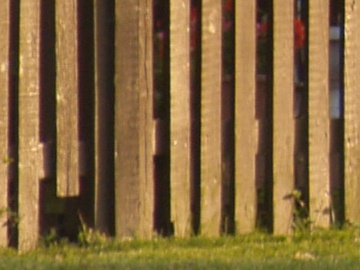
|
A corner sample from the same shot
|
| In the field Shooting a series of samples is one thing; using a lens in the field — another. I've used the lens to shoot some wildlife at my local pond and in a nearby bird sanctuary. And this is where I really warmed up to this piece of glass. In most such applications I shoot from the hand, without a tripod, which I find too constraining. The 400 mm EFL is quite long, not easy to handhold, therefore I'm switching to ISO 200 or 400, still working mostly at the full aperture. Under such conditions I was expecting to get about 20% of sharp, properly focused and not shaken, images. The results were considerably better. The small lens size and weight turned out to be assets here, and the AF generally performed just fine. Of course, the small depth of field becomes a problem here: if the subject moves just a little, or if the AF sensor points off the part you want to be in focus, the picture is doomed. In any case, I found that usually the lens sharpness wasn't the bottleneck; all these other factors were. About depth of field: at 200 mm and F/5.6, with the lens focused at 6 meters (20 ft), the DOF extends about 7 centimeters (less than 3 inches) in each direction from that distance. If your bird just moves its head a little, you are out of luck. Using F/8 instead, you'll get about 10 cm (4 inches) in each direction, not a dramatic difference. (This was calculated with the circle of confusion being 0.015 mm, or 1/1440 of the image diagonal; my usual assumptions.) Going up to F/16 gives us 21 cm each way, at the expense of requiring a longer shutter speed (remember, the stupid bird keeps moving!). We're walking a tightrope here. Here is a very patient duck on my pond, a picture taken in the nice, evening sunlight.
|
| 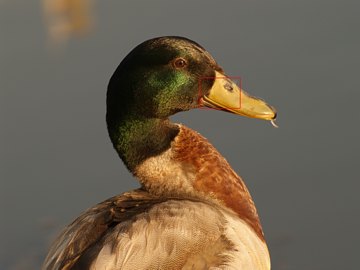
| 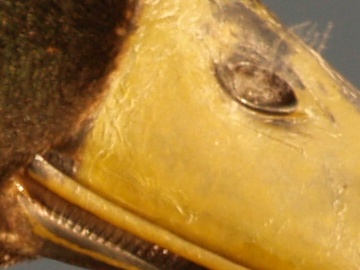
|
F = 200 mm, aperture priority (-0.7 EV): 1/160 s at F/9.0, ISO 200
|
| The picture could use a better photographer, but certainly not a better lens. At F/9 (handheld) it has enough sharpness for any purposes, and the background water is still nicely blurred out. Out of five frames shot of this particular subject, three were of a similar quality, and two slightly out of focus and/or shaken, although not badly so. Another subject, under somewhat worse conditions (less light), also more difficult to focus on. This time I decided to boost the CCD gain to ISO 400, shooting wide open.
|
| 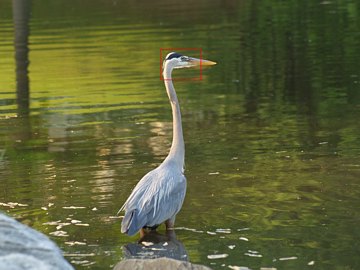
| 
|
F = 200 mm, aperture priority (-0.3 EV): 1/250 s at F/5.6, ISO 400
|
| Respectable, if not spectacular; shot at the full aperture of F/5.6. Focusing was done on the head, which was moving all the time, not too easy. Still, about 60% of shots from that scene turned out acceptable. To finally convince you that the lens, when stepped down by 1.5 stops, can deliver quite pleasing results, two more examples shot handheld at the longest focal length.
|
| 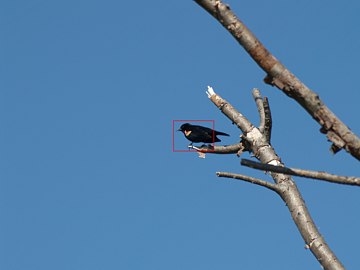
| 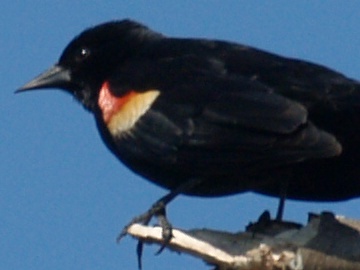
|
F = 200 mm, program exposure (-0.3 EV): 1/500 s at F/9.0, ISO 200
|
|
| 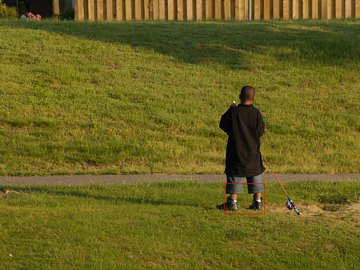
| 
|
F = 200 mm, aperture priority (-1.0 EV): 1/200 s at F/9.0, ISO 200
|
| Last but not least, a street of Annapolis, MD, at the zoom set close to the shortest focal length (still, beyond the reach of both Olympus "standard" zooms), aperture wide open. Quite yummy.
|
| 
| 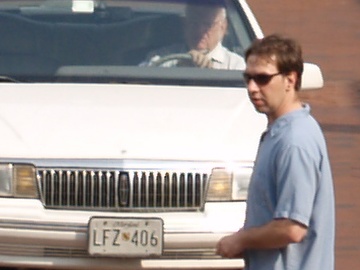
|
F = 62 mm, aperture priority (-0.3 EV): 1/640 s at F/4.2, ISO 100. | You may also have a look at the full frame.
| This is where many zoom telephotos show their weaknesses. I'm not talking just about lowered contrast (shallow shadows), which is a fact of life and easy to correct in postprocessing. After having used the lens for about six months, I'm nicely surprised with its behavior under these circumstances. Here are two more samples.
|
| 
| 
|
F = 160 mm, aperture priority (-1 EV): 1/60 s at F/14, ISO 100, no tripod. WB at 5300K, sharpness -2, contrast -1.
You may also have a look at the postprocessed XGA version: just black level adjustment and some sharpening.
|
|
| 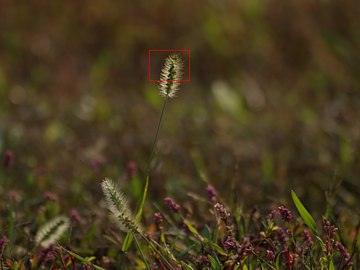
| 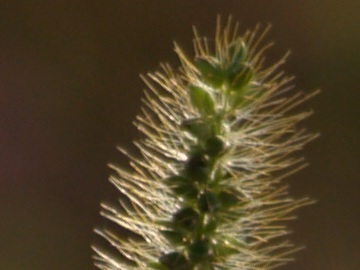
|
F = 200 mm, aperture priority (-1 EV): 1/400 s at F/5.6, ISO 100. WB at 5300K, sharpness -1, contrast -1.
|
| I am not quite sure if the first picture is ideally in focus; probably not; at 1/60s handheld it may also have some camera shake (although it does not seem to be the case); still, I can print this image to 12x16" (30x40 cm), as it will be twice as sharp as the 1:1 sample viewed on my monitor (and probably yours). The XGA version restores blacks, although many photographers may prefer to keep the tonality as it is, for a more atmospheric effect. Generally, we cannot complain about the lens here; this is even more true about the second sample, shot at the longest zoom setting and full aperture. Sigma vs. Olympus "budget" tele zoom An obvious question may arise: how good is the Sigma 55-200 mm zoom compared to the Olympus "economy" offering in this focal length range, the 40-150 mm, F/3.5-4.5? Direct comparison between both lenses leaves no doubt: the Olympus lens has higher contrast and more sharpness. While the difference varies with focal length, it is quite visible; more than that between the Olympus 14-45/3.5-5.6 and 14-54/2.8-3.5 in my standard zoom comparison. I've shot a few dozen of comparative samples of both lenses; first with E-300 and E-500 side-by-side, then with the E-500 alone (to avoid any in-camera processing differences), and there is no doubt about this bottom line. The Olympus lens also has a wider aperture, by 1/3 EV at the wide end, and by 2/3 EV at the long one. Well, wider aperture means more glass, and this translates into an increase in size, weight, and price. An F/5.6 aperture is acceptable in a compact, budget-priced zoom, and let's get used to it. On the flip side, the 33% increase in the maximum focal length offered by Sigma may be worth the sacrifice. Still, I find the Sigma lens OK for most applications where lens sharpness is not the limiting factor. In addition, the 55 mm filter thread on this lens is quite convenient (compared to 58 mm in Olympus): I can re-use many of the filters I already own. As a bonus, you can find a lightweight lens attachment of this size, if you are desperate to get even more reach. The TCON-17 auxiliary lens by Olympus, designed for the '5050, turned out to be useful here; see a separate article. Last but not least, remember that the Sigma 55-200 mm sells for about half price of the Olympus 40-150 mm. Try to beat that. Update of 2008: Last year the 40-150 mm F/3.5-4.5 ZD lens was replaced by Olympus with the wondrously tiny and light 40-150 mm F/4.0-5.6. The new Olympus budget tele zoom no longer holds an advantage over the Sigma in terms of aperture but still outperforms it optically, if not by a wide margin. It also has a size/weight advantage for those who want to travel light. Conclusions I had mixed feeling before buying this lens, not expecting much from it. It turned out better that I was hoping for. The lens has an impressive reach, compact size, respectable image quality (becoming quite good at F/8), and I was enjoying it in daily use. With a competitive (not to say: dirt-cheap) price, you no longer have an excuse not to include a tele-zoom into your E-System lens arsenal. | |||||||||||||||||||||||||||||||||

|
My other articles related to the |
|
Olympus® is a registered trademark of Olympus Corporation.
This page is not sponsored or endorsed by Olympus (or anyone else) and presents solely the views of the author. |
| Home: wrotniak.net | Search this site | Change font size |
| Posted 2005/05/17; last updated 2009/02/14 | Copyright © 2005-2009 by J. Andrzej Wrotniak |